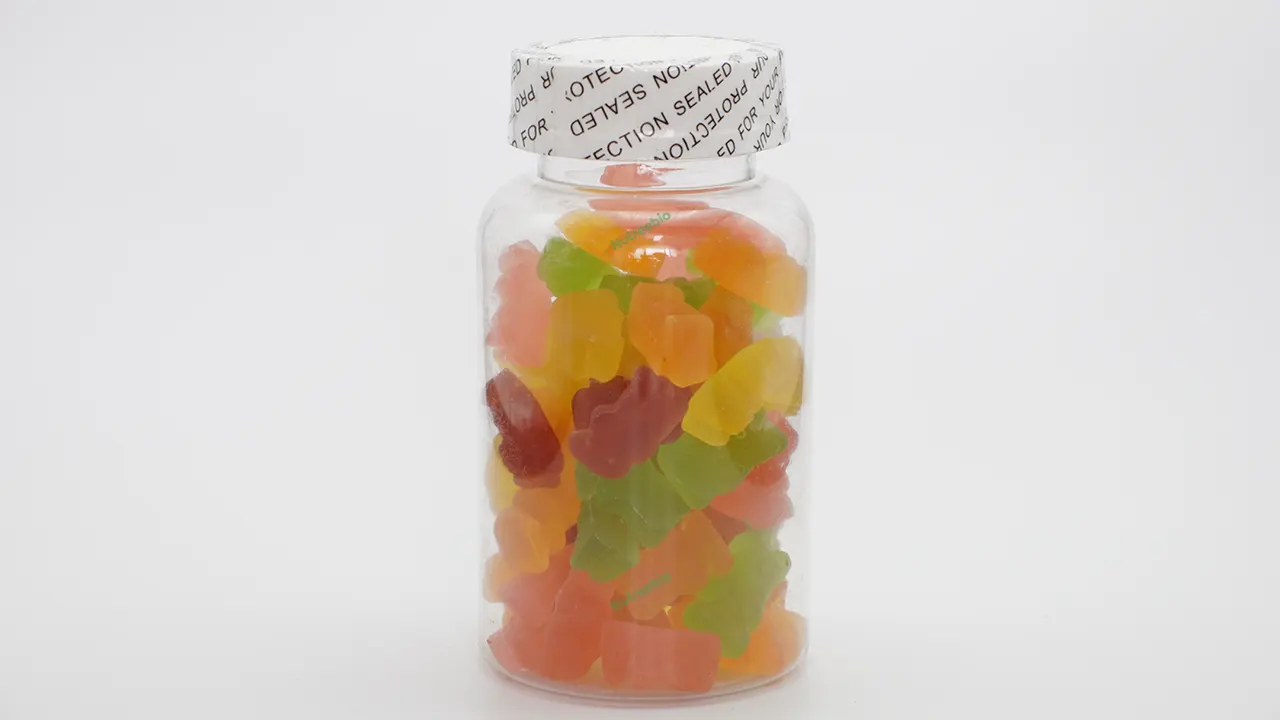In recent years, gummy supplements have emerged as a consumer favorite—blending health benefits with candy-like appeal. But behind every successful gummy is a well-crafted gummy formula that balances taste, nutrition, and regulatory compliance.
At NutreeBio, we’ve helped dozens of global brands—from the U.S. to Southeast Asia—develop effective, great-tasting gummies. Whether it's immune support or beauty-from-within, we know what works in a gummy—and what doesn't. In this article, we’ll walk you through how ingredients and dosage decisions directly impact the performance and marketability of your gummy supplements.


1. What Makes a Good Gummy Formula?
A good gummy formula isn’t just about adding trendy ingredients—it’s about smart design that delivers real results and consumer satisfaction.
✅ Key Goals of a Functional Gummy Formula:
- Palatability: Pleasant taste and texture are essential for customer compliance and repeat purchases. (If it doesn’t have the right taste, it loses one of the main advantages of gummies, so why don’t customers choose tablets or capsules?)
- Active Performance: The formula must deliver bioavailable and effective levels of active ingredients.
- Stability: The gummy must maintain potency, color, and texture over shelf life.
- Regulatory Compliance: Labels must align with market-specific regulations (FDA, GMP, ISO, etc.).
🎯 Taste vs. Effectiveness: A Delicate Balance
In functional gummies, taste and effectiveness are often in tension. High-dose ingredients like zinc, magnesium, or certain botanicals may have a strong aftertaste or bitter notes. To offset this, formulators may use:
- Natural flavor maskers
- Encapsulation techniques
- Sweeteners or acid regulators
But excessive masking can reduce the actives' bioavailability or create instability. The challenge is to balance efficacy with a pleasant mouthfeel—especially in low-sugar or vegan formulas.
🧪 Common Gummy Formula Structure:
Most functional gummy formulations follow a base structure:
- Gelling agent: Pectin or gelatin (depending on target market and label claim)
- Sweetener: Sucrose, glucose syrup, or sugar-free options like erythritol
- Acidifier: Citric acid for pH balance and flavor brightness
- Flavor & Color: Natural flavors (fruit juice concentrates or extracts) and natural colors (like beetroot or turmeric)
- Actives: Vitamins, minerals, amino acids, plant extracts, or probiotics
- Coating (optional): Oil, sugar, or carnauba wax for anti-sticking and mouthfeel
This foundational formula is then tailored by functional category and customer preferences—such as “vegan,” “sugar-free,” or “clean label.”
2. Common Functional Ingredients Used in Gummies
A well-designed gummy supplement begins with smart ingredient selection. Whether you're targeting immunity, energy, or skin health, choosing the right gummy ingredients—and knowing how they interact—is the cornerstone of an effective formula.
🎯 Functional Categories & Popular Ingredients
Combining our nutreebio customer experience and my discussions with factory formulators, I have summarized the following table, which roughly covers some of the most commonly used functional ingredients in gummies, categorized by health benefits:
| Function | Common Active Ingredients |
|---|---|
| Immune Support | Vitamin C, Vitamin D3, Zinc, Elderberry Extract |
| Sleep & Relaxation | Melatonin, L-Theanine, Chamomile, Passionflower |
| Beauty & Skin | Biotin, Collagen, Vitamin E, Hyaluronic Acid |
| Energy & Focus | B12 (Methylcobalamin), Caffeine, Panax Ginseng |
| Digestive Health | Probiotics (e.g. B. coagulans, L. acidophilus), Prebiotics (Inulin) |
| Bone & Joint | Calcium, Vitamin D3, Magnesium, MSM |
These ingredients can be used individually or in synergistic blends—depending on the desired benefit and dosage target.
🔗 Synergy & Interactions
Some ingredients work synergistically, enhancing each other’s effects. For example:
- Vitamin D3 + Calcium → Better bone absorption
- Biotin + Zinc + Vitamin C → Comprehensive hair, skin & nail support
- Probiotics + Prebiotics (Synbiotics) → Improved gut health and stability
However, not all combinations are ideal. Some ingredients are mutually exclusive. For example:
- Iron + Calcium may compete for absorption.
- Melatonin at high doses may conflict with daytime energy actives like caffeine.
That’s why it’s critical to consider ingredient compatibility—not just marketing appeal—when formulating.
🧪 Other Considerations
Flavor impact: Some actives have strong taste profiles (e.g., ginseng, B-complex vitamins) and require masking or microencapsulation.
Heat & pH sensitivity: Probiotics, enzymes, and some botanicals may degrade during cooking. Proper formulation and post-cook addition methods are needed.
Dosage window: Gummies have limited space (typically 2–5g per piece), so highly effective, low-dose ingredients are often prioritized.
3. Does Adding More Ingredients Make Gummies Better?
When it comes to gummy formula design, many brand owners fall into the same trap: believing that more ingredients = better product. While a long ingredient list may seem impressive, it often backfires in terms of effectiveness, taste, and compliance.
❌ The Problem with Overloading Your Gummy Formula
Adding too many active ingredients can cause several issues:
⚖️ Formula instability: Certain compounds may interact negatively, degrade over time, or reduce overall shelf life.
👅 Poor taste and texture: Bitter or metallic flavors from vitamins and botanicals are harder to mask in complex formulas, especially in a small gummy base.
📉 Ineffective dosages: With only ~3–5g of space per serving (usually 2 gummies), spreading that across 10+ actives often means none are at their effective dose. The result: a nice label but minimal impact.
📋 Regulatory challenges: More ingredients = more risk of exceeding limits, triggering claims restrictions, or facing rejection during registration/import.
🧠 A Real Example: Creatine Gummies
In our YouTube video titled "Does Higher Creatine Content Make Them Better?", We explained that although some customers want 1.666 grams of creatine per gummy, cramming this into a small gummy isn’t practical—or palatable.
Instead, we recommend:
- 5g per day spread across 4 gummies, or
- Micro-loading strategies (e.g., 1.25g per gummy, twice daily)
This shows that fewer ingredients, well-dosed, can be far more effective than a cluttered formula.
We recommend: Let one or two hero ingredients shine. Supporting actives can complement the formula, but only if space, flavor, and function allow.
🧪 When to Simplify vs. Combine
| Situation | Recommended Approach |
|---|---|
| Single-purpose product (e.g. sleep aid) | Focused formula with 1–3 synergistic actives |
| Budget-sensitive market | Short, effective formulas to control costs |
| Gummy with strong base flavor | Avoid bitter ingredients that may ruin taste |
| Multi-benefit SKUs (e.g. women’s wellness) | Carefully selected combo formula with tested synergistic doses |
💡Bottom Line: More is not always better. The best gummy formulas strike a balance between functionality, compliance, flavor, and dosage.
4. Why Proper Dosage Matters in Gummy Supplements
One of the most critical—and often overlooked—factors in gummy supplement development is dosage. The effectiveness of a product doesn’t depend solely on what ingredients are used, but also on how much is included and how it’s delivered.
I mentioned earlier that Gummies Have Physical Limits, Unlike capsules or powders, gummies typically weigh only 2–5 grams per piece, and that includes everything: active ingredients, gelling agents, sweeteners, flavors, and colors. A 2-gummy serving might only offer 6–8 grams of total space, meaning: You can't fit everything in and Each ingredient must be dosed with purpose.
This physical constraint makes Gummy Dosage a balancing act between efficacy, taste, and format.
📊 %DV, Minimum Effective Dose, and Regulatory Compliance
When designing your formula, it's crucial to consider:
- %DV (Percent Daily Value): For essential nutrients like Vitamin D or Zinc, most markets (like the U.S., EU, UK) require that the %DV be labeled. It also helps consumers evaluate whether the supplement is meaningful.
- Minimum effective dose (clinically proven range): Adding 5mg of Ashwagandha doesn’t deliver any benefit if the researched dose is 250–600mg.
- Upper limits (UL): Exceeding safe levels of certain nutrients (e.g., Vitamin A, Iron) can lead to health risks or non-compliance with local regulations.
✅ A good gummy dosage hits the sweet spot between effectiveness and regulatory safety.
🔁 High Dose vs. High Frequency: What Works Better?
So if adding too many ingredients to gummies doesn't work, what about increasing the number of gummies you eat (Daily Value) each day? It's true that some ingredients require a higher Daily Value, but this doesn’t mean you need to load everything into one serving. I've summarized the following alternative strategies:
| Strategy | Pros | Cons |
|---|---|---|
| High Dose per Serving | Fewer servings per day; better compliance | May affect taste, texture, or stability |
| Multiple Small Servings | Smoother flavor, better absorption (e.g., creatine loading) | Relies on customer consistency |
For example, with creatine or magnesium, split dosing may improve absorption and reduce GI discomfort.
⚠️ The Myth of “More Ingredients = Better Product”
A formula with 10+ actives at token doses won’t perform well. A consumer might think they’re getting everything, but the reality is:
- Each active is underdosed
- Efficacy is compromised
- They’re better off taking multiple targeted products
That’s why we often recommend 2–3 hero ingredients with meaningful dosages, rather than a crowded, underpowered formula.
🧪 Our Formulation Tip: Start with the target health benefit, then reverse-engineer your gummy dosage based on clinical studies, regulatory limits, and format constraints.
This approach ensures the formula delivers real value—not just a nice-looking label.
5.How We Help You Create a Balanced and Effective Gummy Formula
At Nutreebio, we've helped hundreds of brands worldwide develop successful gummy supplement formulas—from idea to shelf. Our custom development process is structured yet flexible:
🧪 Step-by-step development:
- Formula Evaluation – We review your desired claims and target market regulations.
- Sample Testing – Based on your preferred ingredients and flavors, we produce prototypes.
- Customer Feedback – You test, evaluate, and share suggestions.
- Formula Adjustment – We refine dosages, taste, or texture until you're satisfied.
🌿 Ingredient recommendations:
We help clients select functional actives based on scientific support, label appeal, regulatory compliance, and flavor compatibility. Whether you're aiming for a clean-label beauty gummy or a high-potency sports nutrition product, we help you find the right balance.
Here I will briefly list a few Popular formulas we are making🔥:
- Sleep Gummies: Melatonin + L-theanine + Lemon Balm
- Hair, Skin & Nails: Biotin + Collagen + Zinc
- Kids' Immunity: Vitamin C + Elderberry + Zinc
- Creatine Gummies: 1.66g creatine per gummy, lab-tested absorption
💡 Want to develop your own gummy formula? Contact our formulation team to start your project today.
6. Final Thoughts: Quality Over Quantity
In gummy supplement development, more is not always better.
Cramming too many ingredients into a small gummy format leads to:
- Ineffective dosages
- Compromised flavor and texture
- Regulatory issues and higher costs
True success comes from precision:
- Choose only essential, synergistic ingredients
- Ensure clinically effective dosages
- Optimize for taste, stability, and user experience
✅ The best gummy formulas are those that are simple, effective, compliant, and delicious.
Your brand's reputation depends on what’s inside the bottle—not how many ingredients are on the label.



One Response